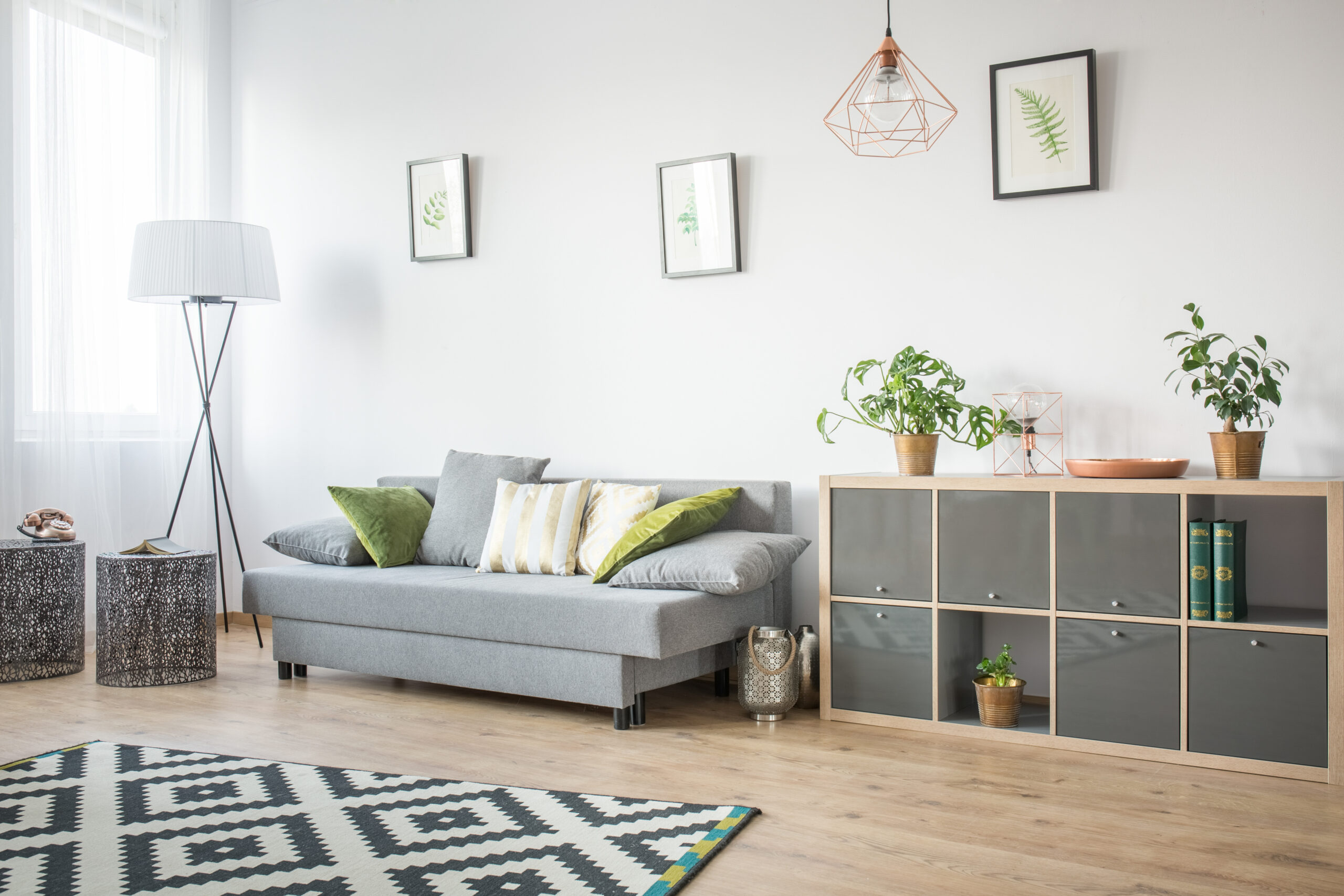Research continues to remind us that spending time in nature offers a wide range of physical, mental, and emotional benefits. From reduced tension, better sleep and enhanced creativity, nature encourages us to breathe deeper and forget the stresses of modern life. But, is there a way to bring all the benefits of nature inside your new home?
The simple answer is yes. And, as your living room is likely to be the space that you spend the most time in, it’s a great place to start. So, whether you live in a bustling city or a quiet village, here are some simple interior guidelines to help you design a nature-inspired living room:
Opt for a natural colour scheme
When it comes to selecting a colour palette inspired by nature, look towards earthy tones like greens, browns, blues, and muted greys as your base. These colours represent the soothing hues of the natural world and can help to create a calming and rejuvenating atmosphere.
Ensure to create a balance of light and dark shades in your space using colour. Lighter colours can make a room feel more spacious and open, while darker tones add depth and cosiness. For instance, you could pair light walls with accents of dark wooden furniture or a deep green sofa for a great balance.
Use natural fabrics and materials
Using natural fabrics and materials in your living room can create a warm, inviting, and eco-friendly space. Consider wooden coffee tables, simple chairs with rattan or bamboo accents, stone or slate surfaces and jute or sisal rugs. These materials evoke a sense of the outdoors and are often much more sustainable options compared to synthetic alternatives. Integrating wooden elements into your design can also further enhance your natural look. Wooden beams, shelving, or even a wooden accent wall can add warmth and an organic touch to your living space.
When it comes to finishing touches and accessories, use textiles like organic cotton, linen, and wool for upholstery, throw pillows, and blankets. Look out for nature-inspired patterns such as florals, leaves, or animal prints to maximise the emphasis of the theme. You could also incorporate handcrafted items made from natural materials like pottery, ceramics, or woven baskets sourced from places you’ve visited in nature. These pieces will add a personal touch to your living room and will remind you of the places you’ve visited every time you see them in situ.
Fill your space with plants and greenery
Having plenty of plants and greenery is essential for reaping the full benefits of your nature-inspired living room. Beautiful, leafy indoor plants like ferns, Chinese money plants, spider plants and succulents not only add a touch of greenery but also help to purify the air around them and that you breathe in. If you want to be reminded of more exotic natural locations, then varieties such as Bird of Paradise and orchids can make captivating additions to your collection with plenty of colour and intrigue.
Remember that each plant has its own care requirements, including light, water, and humidity preferences, so be sure to research the specific needs of the plants you choose and tailor your care routine accordingly to keep them healthy and thriving in your home.
Embrace your natural light
Well-designed natural lighting features can help to evenly distribute light throughout your living room and beyond, reducing the need for artificial lighting and creating a healthier and happier environment to be in.
You can maximise natural light using sheer curtains or voile blinds that allow sunlight to filter in, or better still, keep window coverings open throughout the daylight hours to let as much sunlight in as possible. Position your furniture to take advantage of natural light during the day so that no large pieces are blocking it, make use of glass, mirrors and gloss interior finishes in order to reflect as much light around the room as possible.
Incorporate organic shapes and nature-Inspired artwork
The shapes of nature are not ones of perfection. They are often irregular and unique such as the contours of lakes, the form of clouds and the profiles of leaves. Therefore, look for furniture and decor with the same flowing shapes that are reminiscent of nature. Curved or rounded furniture pieces, such as a circular coffee table or oval mirrors, can soften the room as opposed to squares or rectangles. And, look for spirals, hexagons and cone shapes in lighting and accessories to represent the diversity and complexity of items in the wild.
On the walls, you can incorporate artwork or wall decor featuring natural scenes, landscapes, or botanical prints. These pieces can be very personal to you and things you love in nature, as well as serving as focal points to enhance the overall ambiance. Nature-themed accessories like driftwood sculptures, seashells, stones and crystals can all add texture and character to your living room.
Add Natural Scents
The smell of fresh rainwater on leaves during a walk in the woods and the salty sea spray in the air as you walk along the coast are sensory delights that enhance your experience of being in nature. And, even though you can’t beat the real thing, there are many ways to replicate natural scents in your living room to offer similar benefits.
Potted herbs, indoor plants and bowls of citrus peel will help to infuse the air with natural aromas. While incense, oil diffusers and natural wax candles will help to give a more intense scent to carry the fragrance throughout your home. Essential oils like lavender, chamomile and cedarwood can create a soothing and relaxing ambiance, while citrus scents, eucalyptus and lemongrass are uplifting and can help to give a boost of energy.
We hope that this article has given you some inspiration on how to create a nature-inspired atmosphere in your living room. We would love to hear from you and see some photos of your nature-inspired interior wins. Don’t forget to tag us in your social media posts @Peterwardhomes so we can share your achievements.
Don’t forget to keep checking back on our Peter Ward blog for plenty more helpful ideas and interior advice.




